Wondering how to water an air plant? The experts explain
Find out how to water an air plant properly to keep it in top health

Zia Allaway
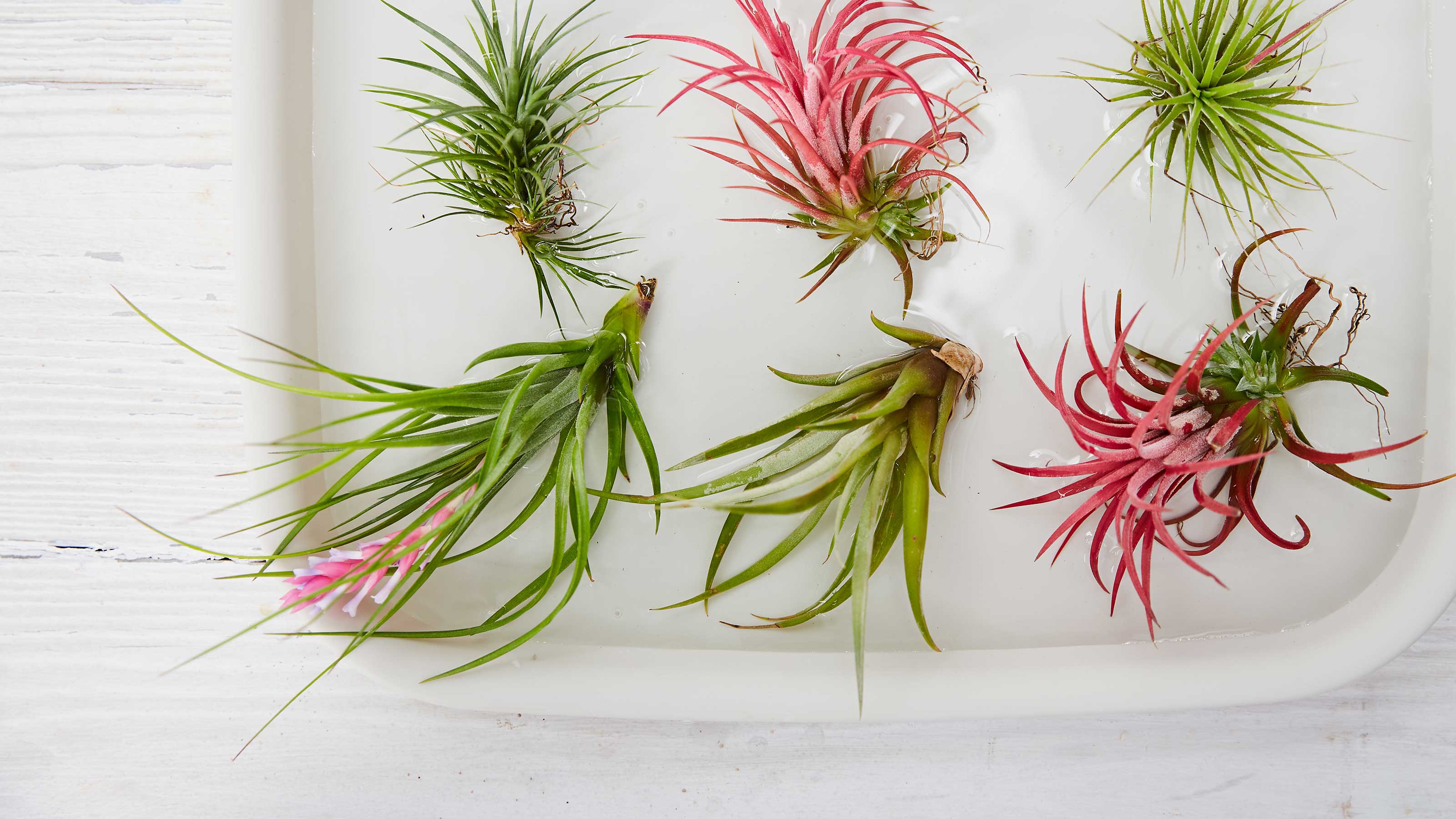
Do you know how to water an air plant? If you've recently added one to your collection, knowing the dos and don'ts is essential to keep it looking its best.
The interesting thing about air plants, as their name suggests, is that they don't need soil to grow. This means they can be displayed in many creative ways to create a contemporary indoor feature – from hanging baskets and terrariums to mounted wall frames.
But just because they don't need soil, doesn't mean they don't need moisture. These are humidity-loving plants, and they need watering, too.
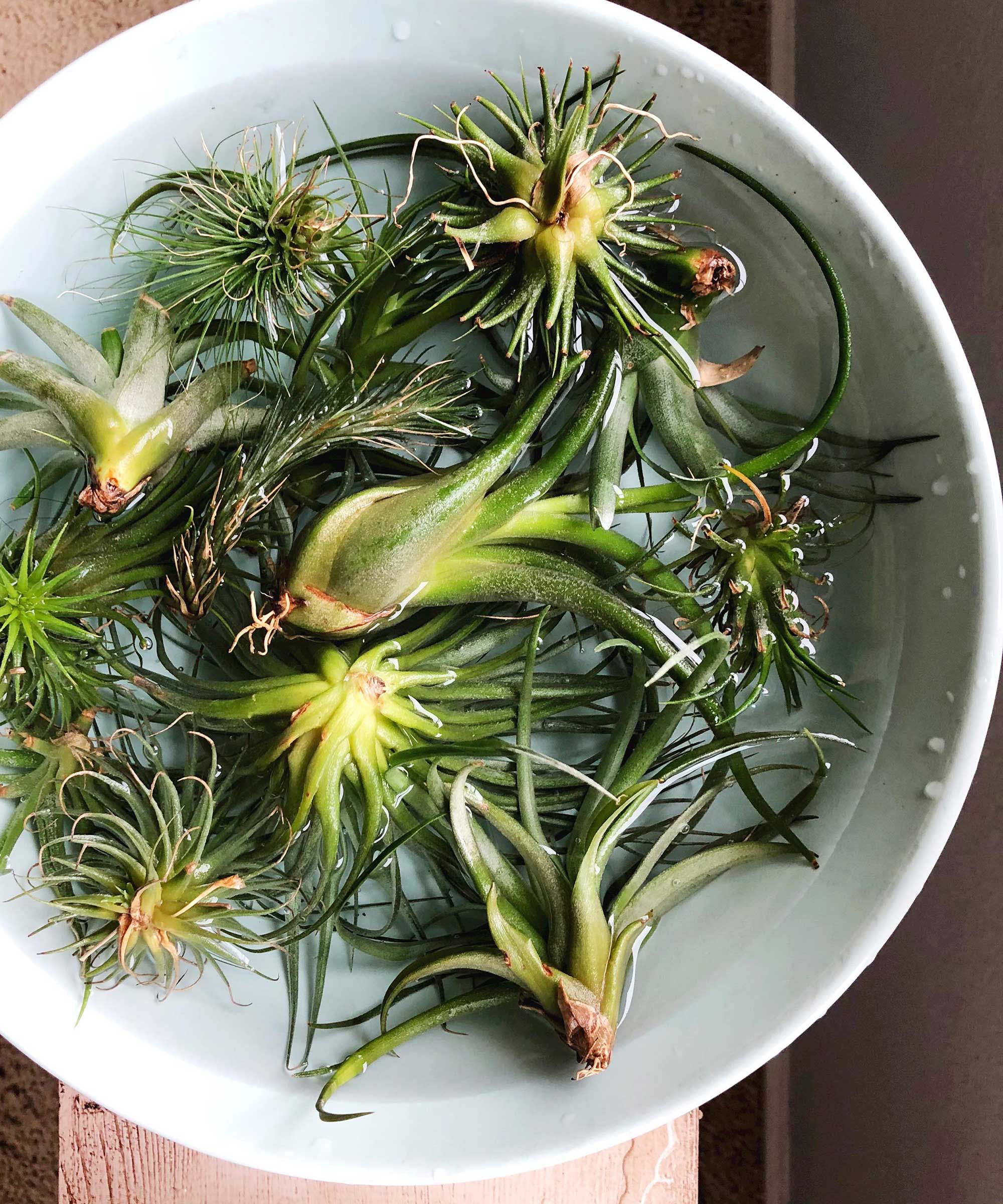
How to water an air plant in 4 simple steps:
Overall, air plants are low-maintenance indoor plants, as long as you put them in the right place and keep them sufficiently hydrated.
Brody Hall, Co-Founder of The Indoor Nursery, shares his simple step-by-step instructions on how to water an air plant:
- Fill a bowl or container with lukewarm water.
- Submerge your air plant in the water, ensuring all parts of the plant are underwater.
- Soak the plant for 20-30 minutes.
- Carefully remove the plant from the water. Place it in a sink or on a towel so that it can drain and air dry.
Jean Bloom, a gardening expert from GardeningFAQs.com, recommends leaving your plants to sit until they are completely dry, which can take one to three hours. This reduces the risk of them rotting.
Putting them somewhere with bright indirect light and good air circulation will help them dry out faster, adds Vladan Nikolic, a houseplant expert of Indoor Plant Blog. He also suggests placing them upside down, so that water doesn't get stuck in any crevices.
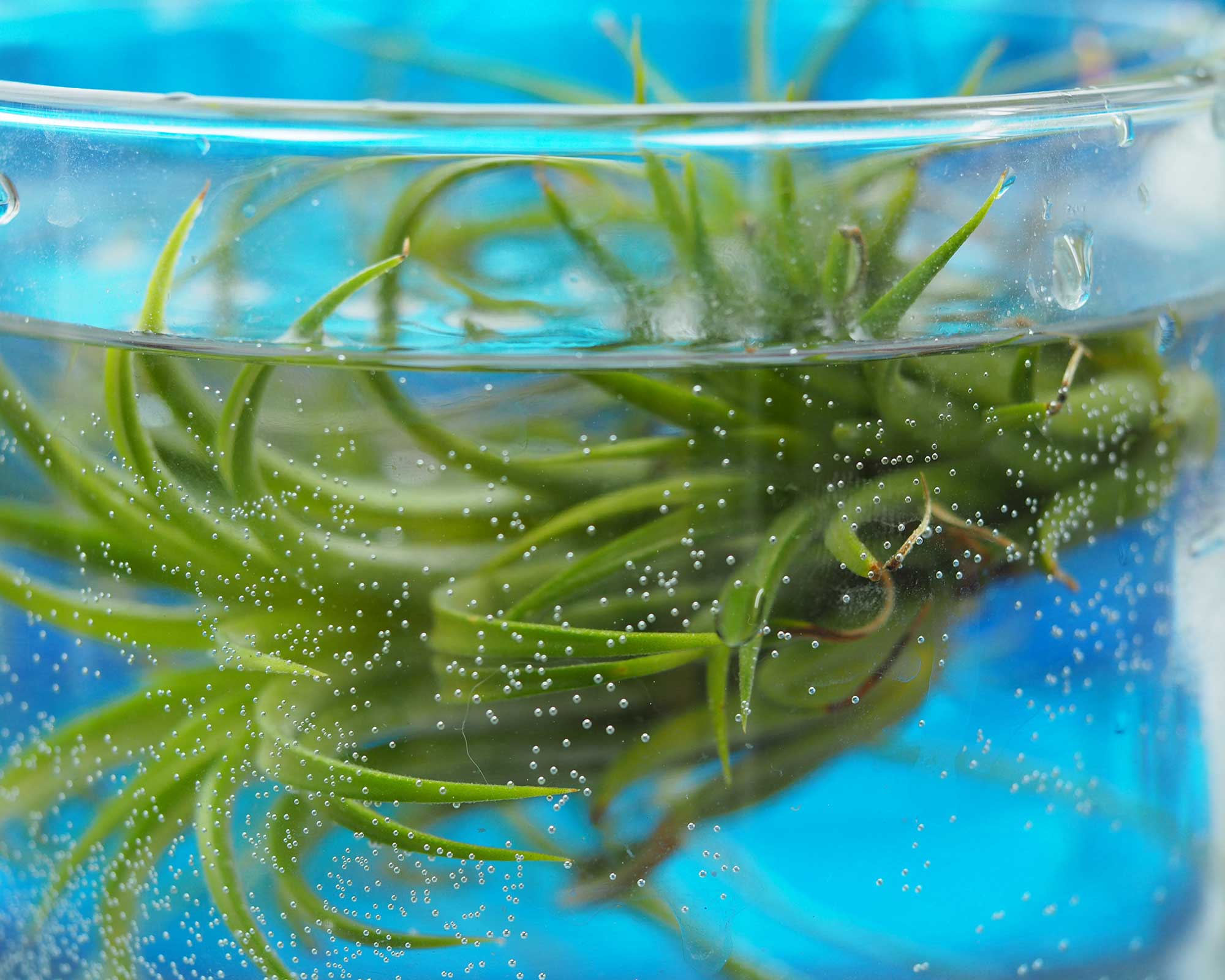
How often should you water an air plant?
'Air plants are typically watered once a week,' says Brody.
Lighting, however, can play a role in how much water your air plant needs: in lower light, it can be less frequent, says Vladan. Likewise, if your air plant is somewhere very humid, it may need less watering.
The leaves are a good indicator of whether your plant needs a drink, Vladan adds. A well-hydrated plant will be supple – an under-watered one will be dry and brittle.
Be careful not to overwater your houseplants, though – this can do more harm than good.
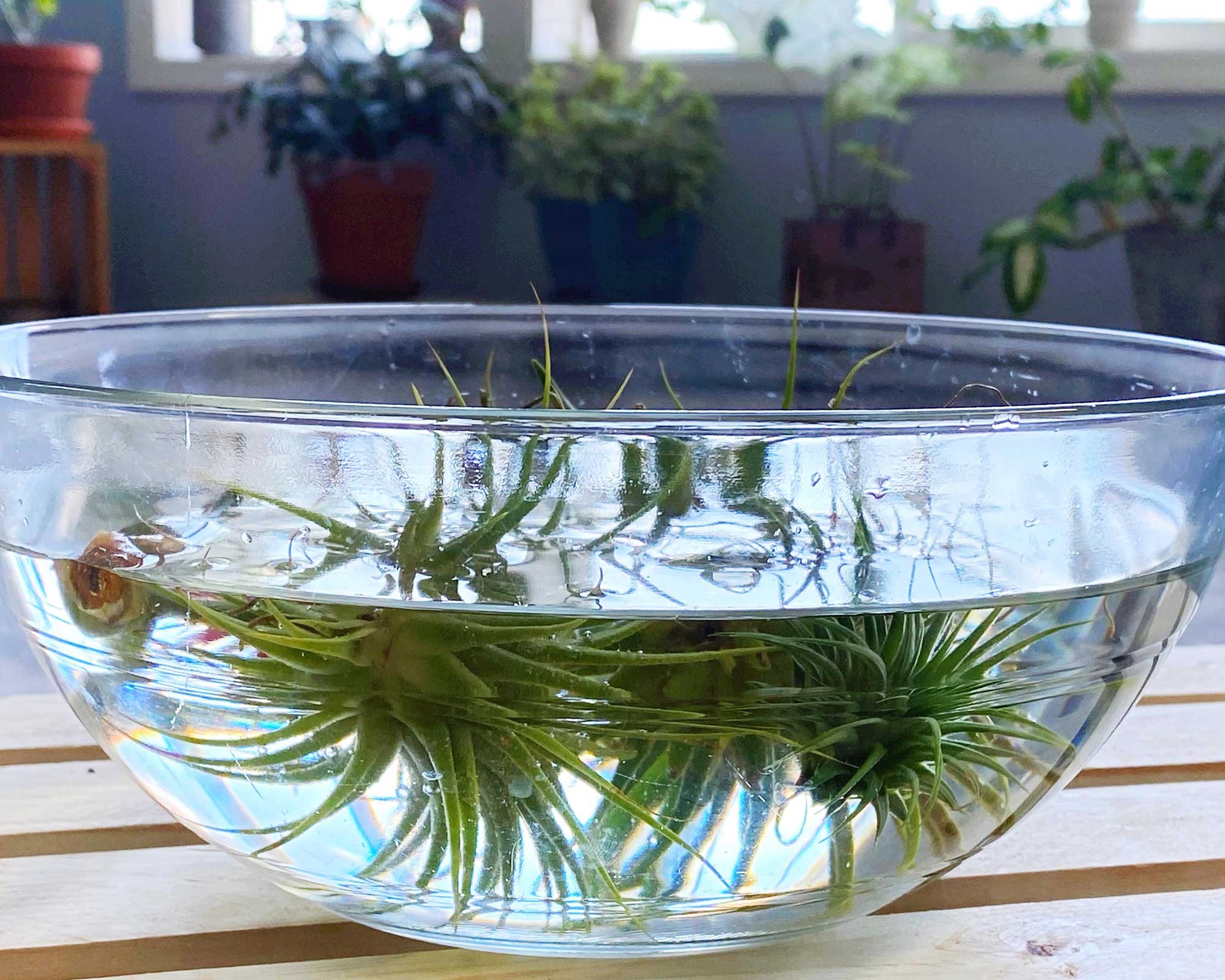
Should you mist air plants?
As mentioned, air plants like humidity, making them great houseplants for kitchens and bathrooms. But, if the environment isn't humid, misting them regularly with a spray bottle (such as this stylish one from Amazon) will give them a boost until you next water them properly.
Regular misting is also a good approach if you can’t remove the plants from their displays, or if you have a silvery or fluffy-looking desert species that requires less water. Again, ensure that there is plenty of air flow around the plants so that they dry off and no water collects between the leaves.
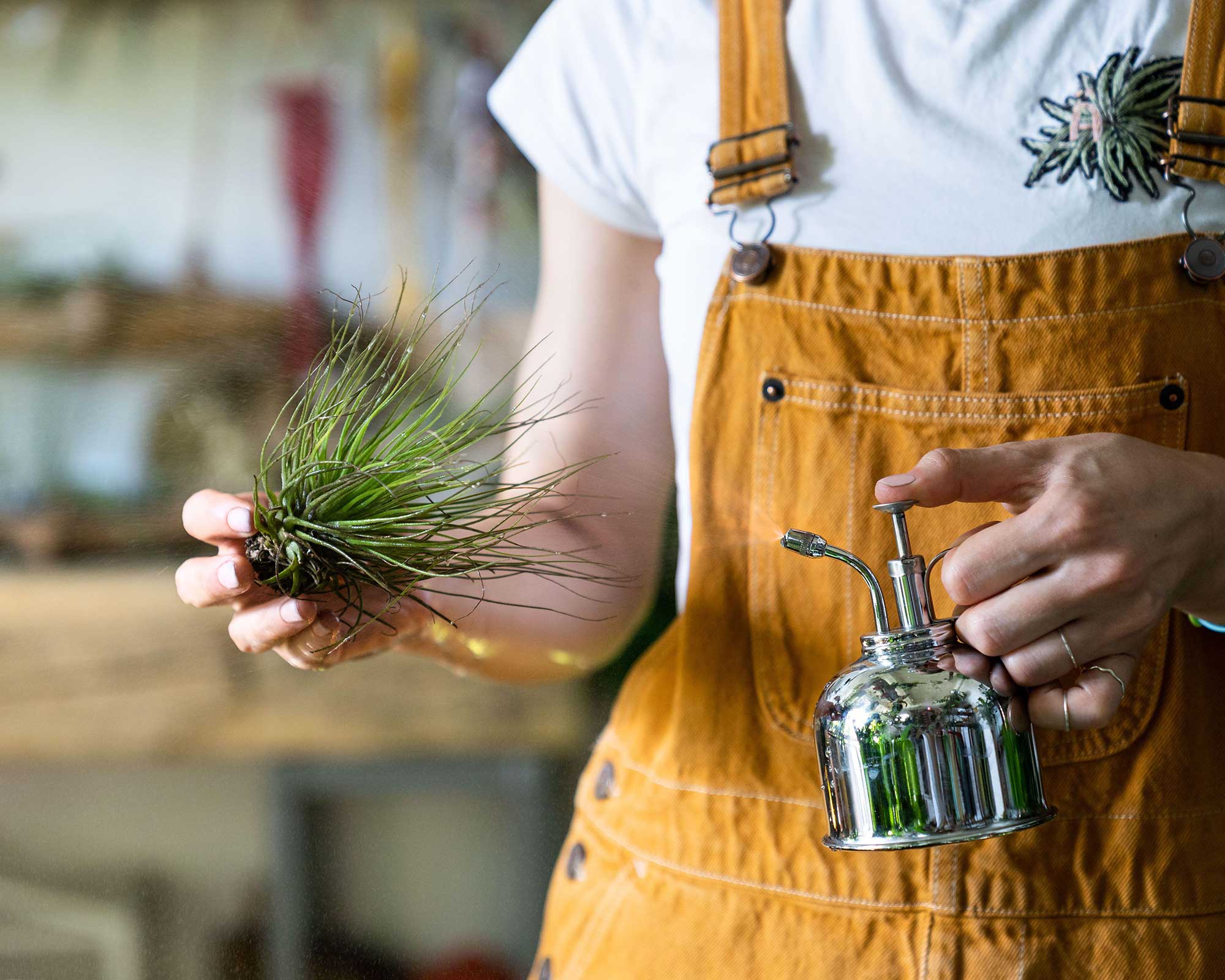
What is the best water for air plants?
Avoid giving your air plants chlorinated water, says Jean – this can cause the leaf tips to turn brown. Use filtered water or collected rainwater instead, if possible.
Alternatively, allow tap water to sit out in a bowl for 24 hours before using it to let the chlorine evaporate, Jean suggests.

The garden was always a big part of Holly's life growing up, as was the surrounding New Forest where she lived. Her appreciation for the great outdoors has only grown since then. She's been an allotment keeper, a professional gardener, and a botanical illustrator – plants are her passion.
- Zia AllawayFreelance writer
